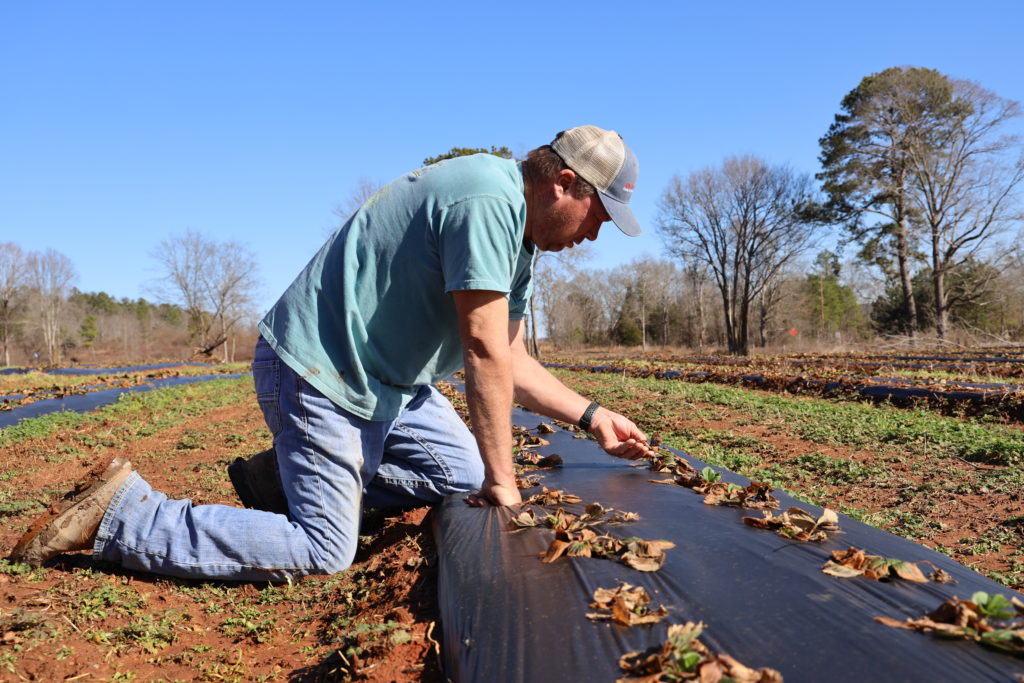Freeze Frame: Farmers Recover From Deep Freeze

By Marlee Moore
Three days before Christmas — with thousands of strawberry transplants in the ground and temperatures beginning to hover around 0 F — John and Kate DeLoach made a tough call.
“There is one day of the year I thoroughly enjoy, and that’s Christmas with Kate’s family in Atlanta,” John said. “We talked it over and decided I needed to stay home. When you’re in production ag, it’s your business; it’s everything. You’re the beginning and the end.”
Farmers across commodities and counties spent the holiday like John — battling a deep freeze across the Deep South. Factoring in wind chill, many saw temperatures near or below 0 F.
For nearly a week, John woke up just after midnight, lit fires and ensured prevailing winds wafted smoke over his rows of strawberry plants, cocooning them in warmth.
“You make your own microclimate,” said John, who postpones using row covers to protect plants till February, when freezes are more likely and blooming plants are most fragile. “I tried to place fires where the smoke would settle across the plants. My granddaddy did this with peach trees decades ago, and it still works today.”

Cattle Comfort
During the freeze, neighboring cattle farmer and former dairyman Randy Bearden tapped into decades of experience keeping animals comfortable.
His goal: Keep cattle out of the mud.
“Instead of using a round bale feeder, we get on the mountainside and roll the hay out,” he said. “We waste a little, but it gives the cattle all the room they need to eat without crowding and rutting up an area.
“In my experience, cattle handle extreme cold better than extreme hot. If they have the body condition and right nutrition, they can survive anything.”
Although winter grazing, like ryegrass, looked brown and brittle after the freeze, a series of warm days helped revive grass quickly.
“We were a little concerned about it, but right at the ground, there was a little bit of green left,” Bearden said. “We knew then we’d be OK. We were thankful to see it coming back.”
Alabama Farmers Federation Beef and Hay & Forage Divisions Director Chris Prevatt said a sharp turn to warm, 60-70 F days was a blessing following the freeze, where cattle farmers broke ice in water troughs and spread extra feed.
“With a little rest, the ryegrass is ready to come right back,” Prevatt said. “Warm weather after the freeze really helped our cattle and hay producers. Our folks will probably have to feed more hay this spring, but ryegrass should keep recovering and get us to the summer grazing season.”
Weathering The Storm
Near Alabama’s Gulf Coast, ready-to-pick satsumas generally survived the extended freeze. The Federation’s Blake Thaxton said long-term effects on tree structure could affect the citrus crop quality into next year.
Meanwhile, peach farmers expressed concern over chill hours needed to produce a sweet, quality peach. The threshold for chill hours is generally 45 F or below, but extended extreme cold, like that in late 2022, can stunt production.
Additionally, poultry farmers burned more propane and natural gas to keep houses warm and conditions safe for birds. Extended, extreme use of heaters will likely affect farmers’ current flock bottom line.
